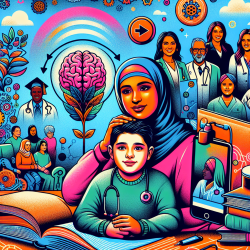Introduction
Sturge-Weber Syndrome (SWS) is a rare neurovascular disorder affecting 1 in 20,000 to 50,000 newborns. Characterized by a facial port-wine stain and neurological complications, early intervention is crucial to improve outcomes. Recent research has focused on mining multisite clinical data to predict seizure onset presymptomatically, offering hope for timely interventions.
Research Insights
The study, titled "Study protocol: retrospectively mining multisite clinical data to presymptomatically predict seizure onset for individual patients with Sturge-Weber," aims to develop predictive biomarkers using clinical and MRI data from two national centers. By leveraging machine learning algorithms, researchers hope to identify children at risk of seizures before the age of two, a critical period for intervention.
Methodology
The study involves collecting and analyzing clinical, MRI, and neurocognitive data from patients who underwent brain MRI before the age of two. The merged data will be used to develop algorithms for abnormality detection and lesion-symptom mapping, aiming to predict seizure onset with higher sensitivity and specificity than current methods.
Implications for Practitioners
For practitioners, these findings emphasize the importance of early and accurate diagnosis in managing SWS. By integrating machine learning-driven biomarkers into clinical practice, healthcare providers can better identify at-risk children and initiate presymptomatic treatments, potentially delaying or preventing seizures and improving neurocognitive outcomes.
Encouraging Further Research
While the study provides a promising framework, further research is needed to refine these predictive models and explore their applicability across diverse populations. Practitioners are encouraged to engage in collaborative research efforts to expand the dataset and validate findings, ultimately enhancing the care of children with SWS.
Conclusion
By harnessing the power of data and technology, we can transform the landscape of pediatric neurology, offering hope for children with Sturge-Weber Syndrome. To read the original research paper, please follow this link: Study protocol: retrospectively mining multisite clinical data to presymptomatically predict seizure onset for individual patients with Sturge-Weber.










